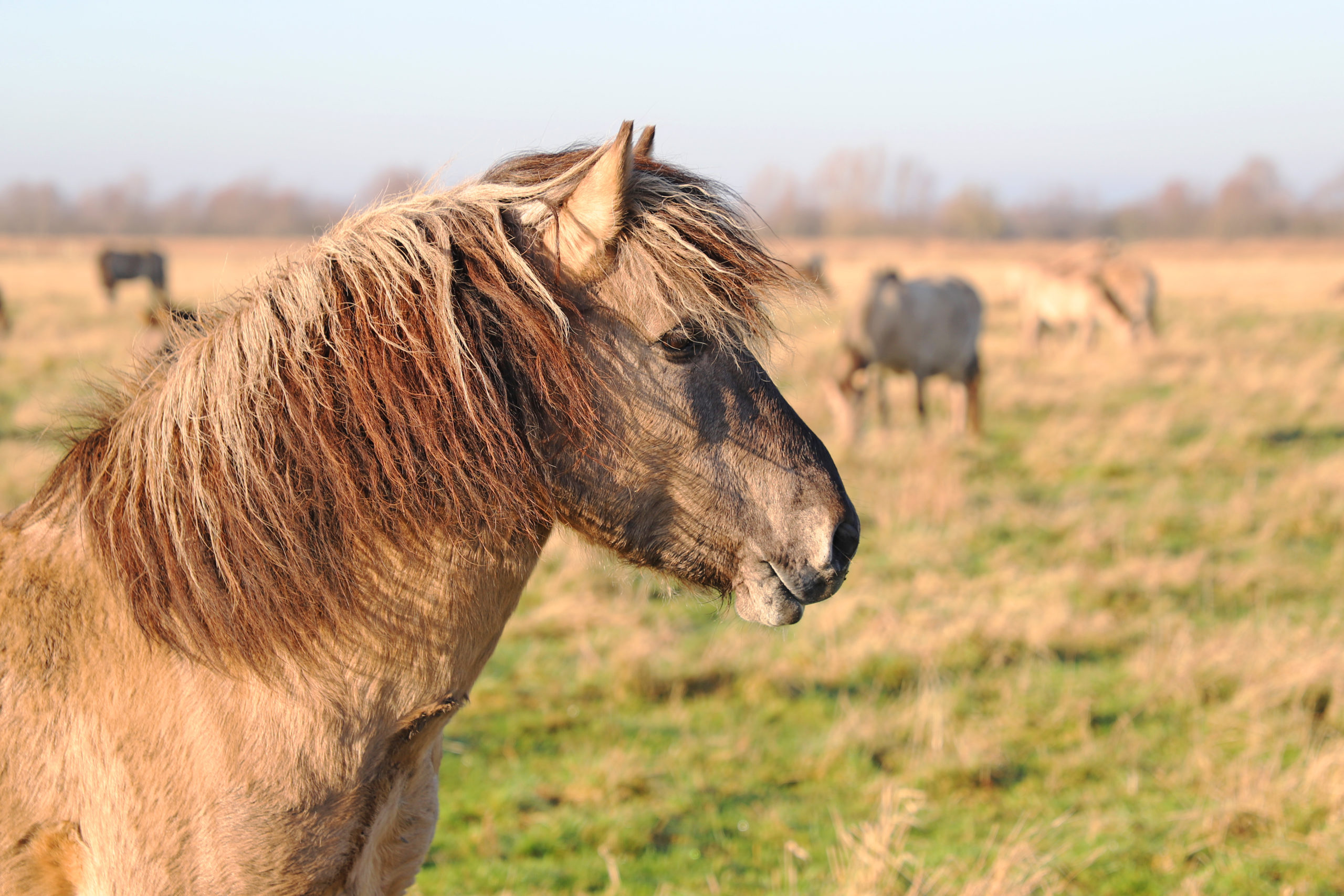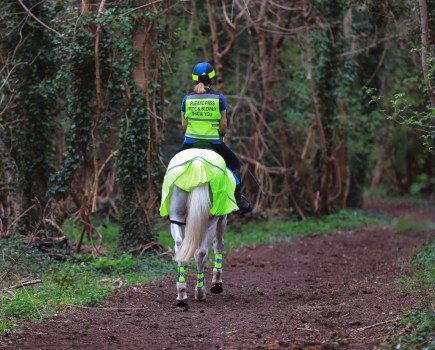A herd of Konik ponies have been introduced to Wicken Fen Nature Reserve in Cambridgeshire. The hardy equines are helping create new habitats for wildlife in a sustainable way.
Grazing animals are essential to the development of vegetation in new areas of the nature reserve. Along with Highland cattle, the ponies will help keep the landscape open and allow wetland and grassland plants to become established. The breed are capable of withstanding life on the fen throughout the year and thrive on the available forage.

Konik ponies at Burwell Fen at Wicken Fen National Nature Reserve, Cambridgeshire. Credit: NT images Mike Selby
The Konik pony originates from Eastern Europe and is ideally suited to Wicken Fen’s lowland landscape. The Highland cattle originate from the Highlands and Islands of Scotland, and are “tough and robust with a placid nature”.
“The effects the animals have on developing vegetation will vary according to their density and feeding behaviour,” said a National Trust spokesman. “Some areas will be grazed more heavily, while other areas may escape allowing the vegetation to grow taller.

Konik pony on Bakers Fen, Wicken Fen National Nature Reserve, Cambridgeshire. Credit: NT images Mike Selby
“The animals also create other habitats such as well trodden paths through areas of long grass, dusty hollows where they roll, water-filled hoof prints and piles of dung. The animals act as catalysts to help attract new species of flora and fauna to the fen.
“Horses tend to snip off selected plants with their incisors, creating a mosaic of short cropped ‘lawns’. Cattle largely graze by pulling or tearing at vegetation, leaving a landscape with a more ‘tussocky’ appearance.
“With these different grazing characteristics, the breeds are the perfect engineers for the long term management of vegetation across new areas of the nature reserve.”
Lead image by NT images Mike Selby









